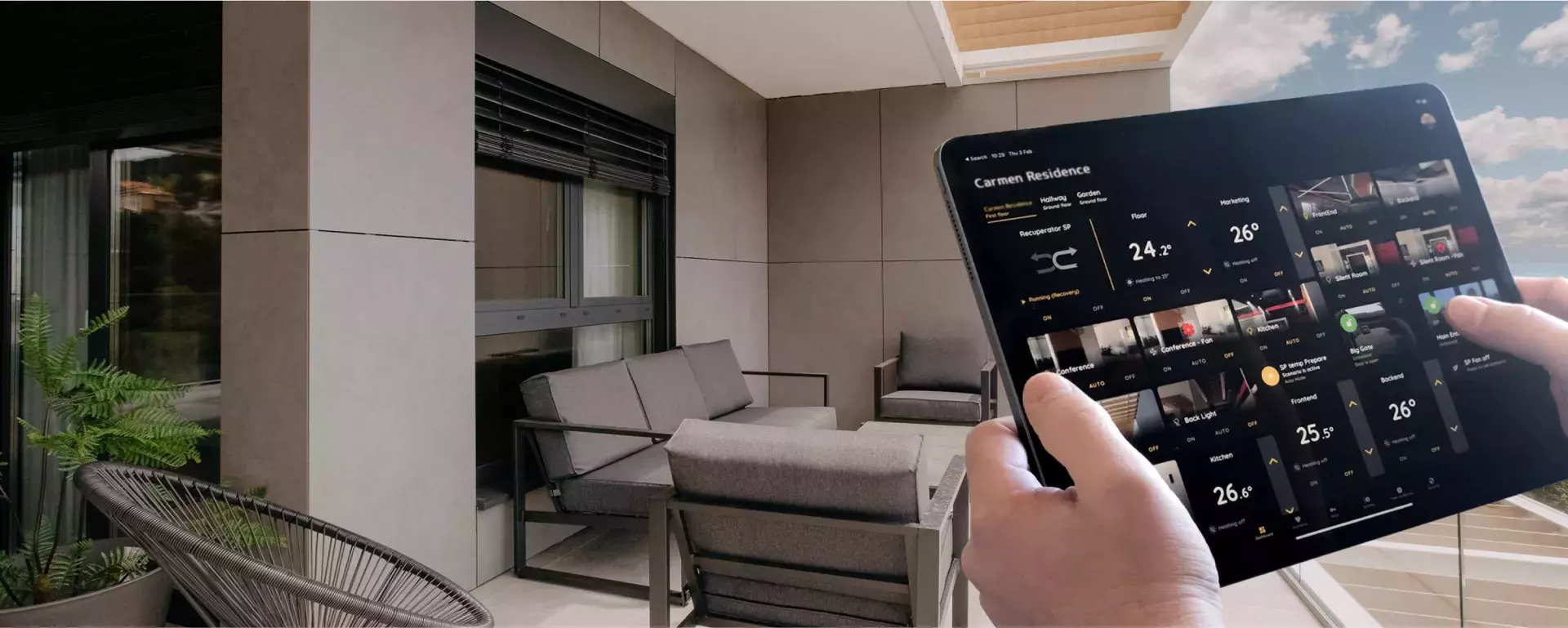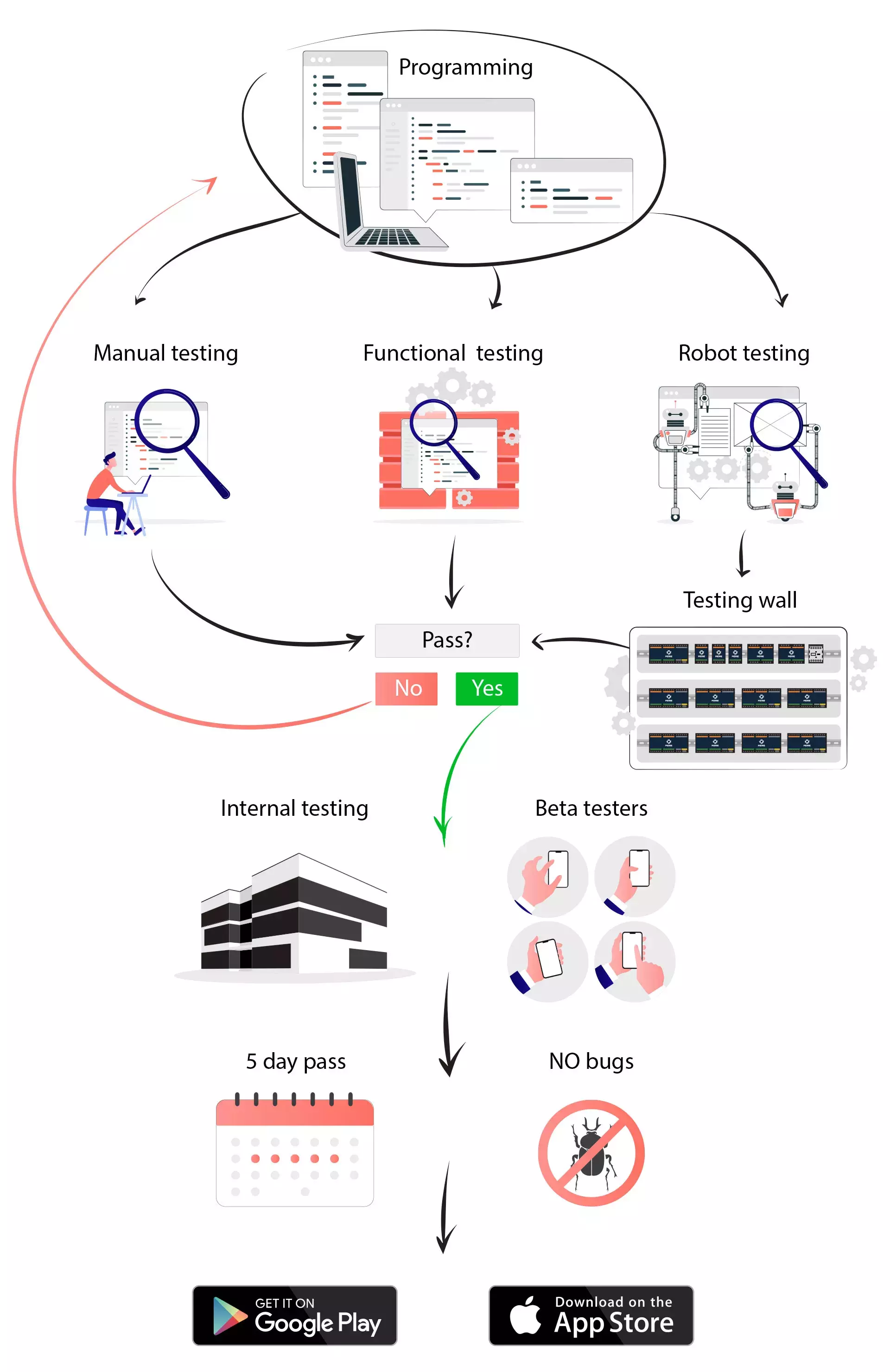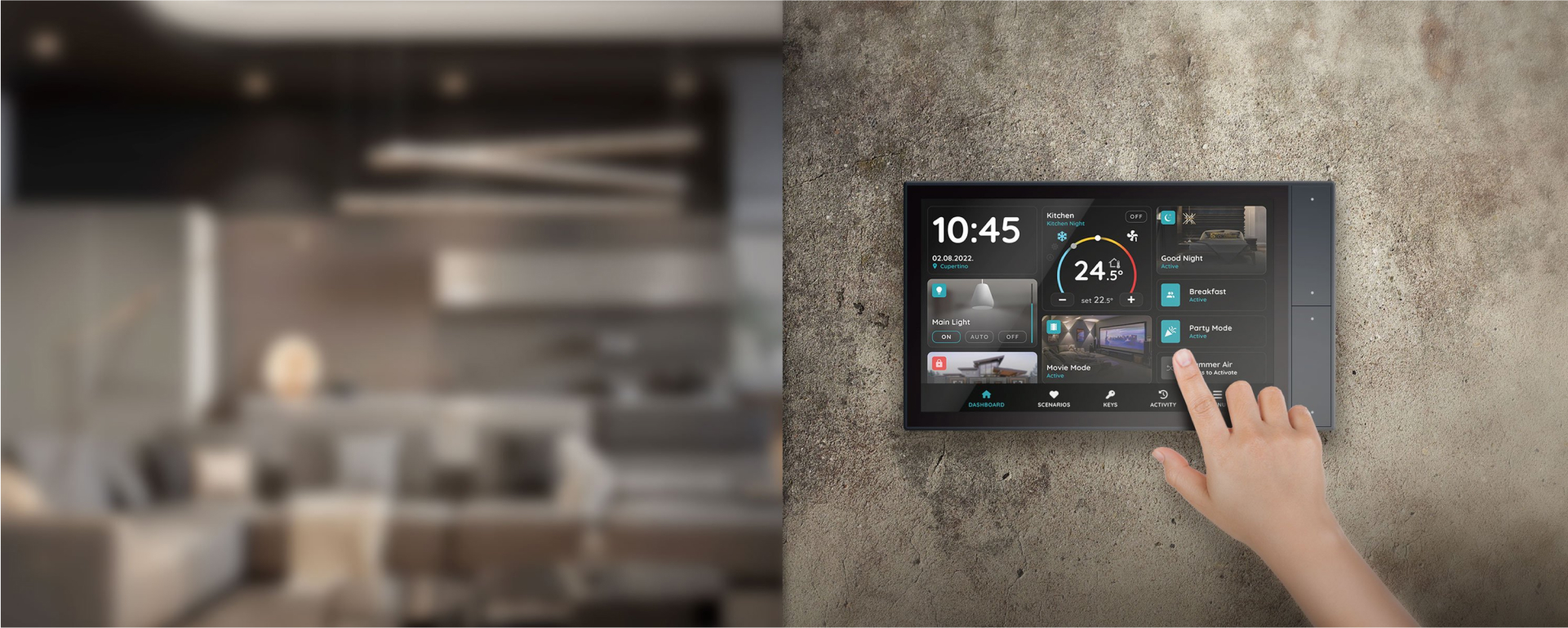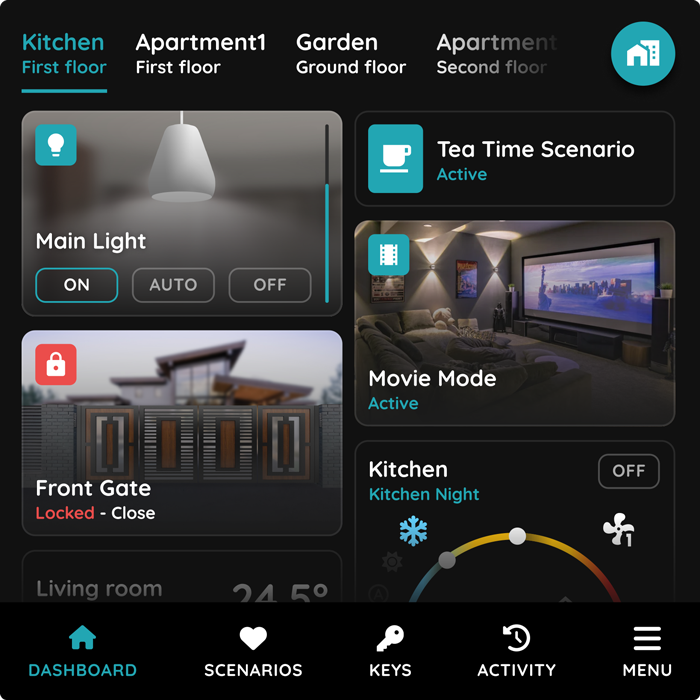Pierre stands out from the competition because of its application. It is probably the best designed smart home application on the market.
- Hardware and Firmware Development
- System design
- App interface
- Supporting devices
- Monitoring
- Testing is the key to success
- Interesting facts
Pierre is a building automation system, or you could call it a smart home solution.
If we dig deeper under the hood, we can see a lot of technically innovative solutions in terms of its unique hardware and software combination.
Users can control and automate lighting, heating, cooling, access, security, irrigation and other functions in their home, apartment, hotel or building. All from a single app.
We are very proud to be a trusted architectural partner in their journey.

First we just listened, then we talked, then we listened again, listened, listened... and then we made a general concept, a stepping stone.
What a journey, and the very first step was to understand the whole concept, to understand the needs, the idea, the big picture. We had a lot of meetings, a lot of writing, sketching, planning. After that we did the first concept.
After 5 years of constant development, we are now sure that we have made a good decision and have laid the foundation for the next decade of the future.
Once we had a concept, we started developing the hardware. First we had to create the 'brain' of the system, a smart home controller.
This smart home controller is responsible for all the logic underneath the system. It was the real innovation and what set us apart from the competition.
We decided to use the ESP32 microcontroller as the heart of the smart home controller.
Then we selected all the components and started prototyping. After a few iterations, we had the very first version of the smart home controller, at which point we started to develop firmware for it.
Firmware
- A real-time operating system FreeRTOS is used.
- Supports OTA updates, updating device firmware remotely, typically using networks such as Wi-Fi, cellular data or ETH. This allows users to receive updates without the need for physical connections or manual intervention.
- Matter standard (protocol) is embedded
- Communication protocols used are MQTT and REST API
ESP32 chip characteristics
- Rich Peripherals
- High-Level Integration
- Ample Memory
- Open-Source Community
- Cost-Effectiveness
- IoT Applications
It was just the beginning, because how the project evolved, we made more hardwares for it.
Now we have two different controllers, 3 different relay boards, 2 different access panels.
CE Certificate
We helped the Pierre team get CE certification, testing and ensuring that the hardware could be sold throughout the EU and the rest of the world.
It was a challenging process, something we were doing for the first time, as are many things in this daily changing digital world.
Test board for hardware testing
When the controllers are assembled they go through a "one week" training programme :) just kidding. They are in test mode for a week in the in-house hardware lab, where they are bombarded with hundreds of tasks to make sure that once the hardware is in use and installed, it works properly.
We simulate the scenarios of a typical family using their smart home as they would in real life.
Due to the complexity of the application, we were forced to create the design system specifically for the Pierre. Shared components and a universal atomic approach led us to a standard where new functionality rarely requires the creation of a new component. We can use something that is already made or a combination of a few.
These screenshots show the intuitive and user-friendly interface of Pierre's Smart Home app. With seamless navigation and clear visual cues, users can easily grasp its functionality from the first interaction. For a more interactive experience, you can also explore the app demo available on Google Play and AppStore.

Performances
Using the JSI (Java Script Interface) approach, which leverages the speed benefits of C++ and JAVA, we have been able to increase performance to essentially native levels.
Instead of sending UI information using JSON files, every user interaction is now faster without the bottlenecks caused by too much data.
Architecture
Our approach is a monorepo structure where part of the codebase is shared between firmware, backend and mobile applications. This move has helped us a lot in terms of maintainability, support and future development.
All of this has helped us to have a stable and high quality product.
The Pierre app works seamlessly on almost all mobile devices (Android and iOS), tablets and custom Android displays.
Scalable infrastrucure design
When you have users around the world, in different time zones, and millions of activities every day, you need to know that your supporting infrastructure is reliable, fast, and cost-effective.
The cloud infrastructure behind Pierre
Our internal DevOps team created a network of 11 servers, which are divided in 2 load balancers and 9 workers. The advantage of this type of network is that it can be expanded very quickly and easily.
To make sure everything runs smoothly, we monitor:
- Over 60 services including
- Usage statistics
- Client requests
- Error logs
- Machine resources (CPU, RAM, disks)
We are proud of our bot, which runs 24/7, mimicking the real user and testing pre-defined scenarios, not only during deployment as part of CI/CD, but also in the production environment.
The team at Studio Present have consistently delivered exceptional work and have always exceeded my expectations. Our partnership has not only grown over the years but has become a strategic asset for Pierre. I look forward to continuing our successful relationship with them in the future.
Why is it so important?
It is a live system, with 10,000 users controlling their buildings every day. A bug, an error could prevent users from entering their home, for example...
Such scenarios are a no-no in the world of smart homes. That is why we pay so much attention to testing. Testing is an essential part of the whole development process. Luckily, our test engineers do it with their strict processes, minimising it for 99.9% chances.

After successfully passing 10,210 (and counting) test cases, we are ready to roll out the updates to the test building and test users.
After 5 days of no bugs, we will release the update to everyone on both stores.
Fast is relative: in the beginning we tested everything manually - it took about 2-3 days. In that time we only had a few dozen test cases.
After we switched to automated testing, the first test servers took about 2 hours to complete all the tests. Again, after we moved to a 128 core, 128GM RAM server, it did the same job in 10-12 minutes.
We are most proud of having the courage and mental strength to dive deep into hardware and software development from the ground up. Today, Pierre is a complete and fully independent product used by thousands of customers.
For the geeks, it handles around 7,000,000 requests a day without a hiccup.
Thanks to the Matter standard, both the application and the hardware can work offline when the premises are disconnected from the Internet.
The partner (integrator) application and the end user application offer the best customisation in the world.
By this we mean that you as a customer have complete freedom to configure your office, home or automation processes and scenarios without any lock-in, down to the lowest level of hardware control.
- Smart Pierre (official website)
- Youtube channel
- References
Explore the app with inbuild demo at:












